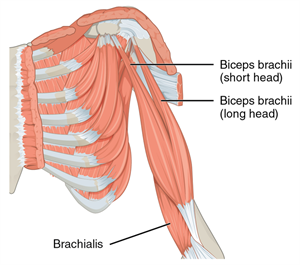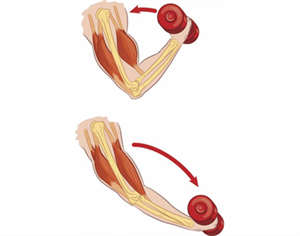PDF chapter test TRY NOW
In the human body, along with the skeletal and nervous systems, the muscular system is responsible for the various body movements. The muscles that give shape and maintain body posture while sitting, standing, or walking cover the bones of the skeleton.
In general, most of the muscles are long bundles of contractile tissue. Each muscle tissue has two ends: a fixed end and a movable end. The fixed end is a point where the muscle originates, and the movable end is a point which pulls the other parts. The movable end of the tendon is drawn out to produce a tough structure, that attaches to the bone.

Muscle attachment
When this muscle tissue is stimulated by a nerve, the muscle contracts to become shorter and thicker, thereby pulling the bone at the movable end. Muscles are tissues that can only contract and relax, but cannot lengthen.
Bones do not have the ability to move on their own. The muscle is responsible for the movement of the bones. The muscle is the most noticeable tissue that aids in the movement of the bones. Muscle is a tissue that functions in pairs since it can't push on its own. They are known as antagonistic couples because they work against each other.
The bending and straightening of the arm is controlled by the muscles in the upper arm. Biceps and triceps are the two muscles involved in this movement by working against each other.

An image explaining the scenario
When a person raises his lower hand, the front's biceps become short by contraction and the triceps muscle relax at the backstretch to pull up the arm. Hence, when a person lowers the arm the triceps at the back contract, and the biceps stretch to pull the arm down. To straighten the arm the reverse happens. The triceps contracts while straightening the arm, while the biceps relaxes.
Not only in the arm antagonistic muscles can be found everywhere in the body. There are two sets of antagonistic muscles in the iris of the eye. The pupil consists of radial muscles that radiate from the pupil like spokes of a bicycle and there are circular muscles. The radial muscles of the pupil are responsible for the widening of the eye, and the circular muscles make the pupil smaller.
Reference:
https://commons.wikimedia.org/wiki/File:1120_Muscles_that_Move_the_Forearm_Humerus_Flex_Sin.png
